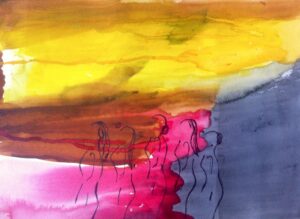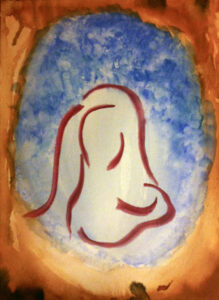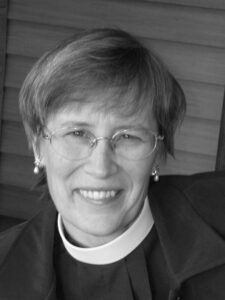Daughters of Zelophehad
 If you have been reading Lindsay’s book, either on your own or in a group, you may be discovering, as I am, that the Holy Scriptures are full of female characters that most of us have never heard of. To start the New Year I chose the Daughters of Zelophehad. I wanted to get back to the Old Testament, moving past the Book of Exodus, and I wanted to find a woman with a Low profile. It was a quick decision, since the unfamiliar five daughters are the only women who speak in the Book of Numbers, and the next book, Joshua, includes the high profile woman, Rahab. (Lindsay has designated Rahab with a Moderate profile, but for those of us who were introduced to Lindsay’s writings with The Scarlet Cord, Rahab’s profile is High.)
If you have been reading Lindsay’s book, either on your own or in a group, you may be discovering, as I am, that the Holy Scriptures are full of female characters that most of us have never heard of. To start the New Year I chose the Daughters of Zelophehad. I wanted to get back to the Old Testament, moving past the Book of Exodus, and I wanted to find a woman with a Low profile. It was a quick decision, since the unfamiliar five daughters are the only women who speak in the Book of Numbers, and the next book, Joshua, includes the high profile woman, Rahab. (Lindsay has designated Rahab with a Moderate profile, but for those of us who were introduced to Lindsay’s writings with The Scarlet Cord, Rahab’s profile is High.)
When I read about the daughters and their courage to face the legal authorities of their day and to challenge the status quo of passing property only to sons, not daughters, I was intrigued by what the young women did and the outcome of their challenge. Moses took them seriously and appealed to God, the author of all laws, and God sided with the daughters to inherit their father’s land. Reading Lindsay’s Who and What and the story of the daughters of Zelophehad, I found this to be a great little parable, just because God responds to the daughters as God’s equal children. At this point we can talk about the struggles our own foremothers have had receiving equality with men. We can talk about being treated as second-class citizens. I once worked as a mortgage banking professional in the Washington DC area. I was sent to Shreveport, Louisiana, my hometown, to gather information about an apartment complex that was for sale, but of course I wasn’t supposed to let on that my company wanted to buy the mortgage. At the management office of the low-income apartments, I tried to fit in with my marginal Southern accent and my East Coast clothes. As I began asking my questions, I heard a deep voice say, “Cum ’ere, little lady.” I went into the inner office and there he was, the Moses of the apartment complex, leaning back in his chair, feet on the desk, the man who had the information I needed and the authority to share it, or not. And I smiled, and spoke with a Southern twang, and I confessed I was with a mortgage business in northern Virginia. For me it took courage and it took determination and I was rewarded with the information I needed. Perhaps Zelophehad’s daughters used a little charm, too, with Moses. How about you? Have you stood up to authority and asked for your due? I imagine many of you have in much more significant ways than my example.
And then we turn the page of Bible Women to Consider this. The Daughters of Zelophehad have been cited in an argument before the United States Supreme Court! They also have been cited in an article in the American Bar Association Journal. These five women may have been unknown to you and me, but other people have known them well enough to lift up their name and their deeds and use them to fight for people’ rights all the way into the 21st Century.
Parents, teachers, and mentors can look to the children given to our care and we can hope that, even if we don’t find the cure for the common cold, well, maybe one of these children will find the cure because of us. But what about smaller accomplishments? A silent woman in the Gospel of Mark placed two small coins into the treasury and Jesus pointed out her selflessness to his disciples. We can continue to place our small coins of thankfulness into our UTO boxes, joining coins from around the provinces to provide grants for good works around the world. And great and lasting things may come from those good works. Do you give a word of encouragement to others? Do you lead your ECW group in ministry? I love that the five daughters stood up to the authorities to ask for what was fair for themselves, but even more I love that their story helps others even today to receive what is fair for them. It is in the thin place of encountering Jesus when taking care of oneself that our deeds become taking care of others.
++++ Coming January 15th ++++
Chapter 7 – Jael
Content provided by Author Lindsay Hardin Freeman
Illustration: Claire Elam




